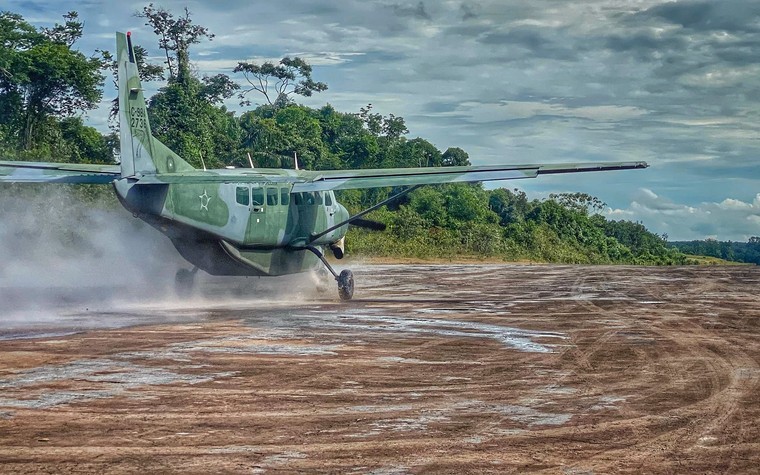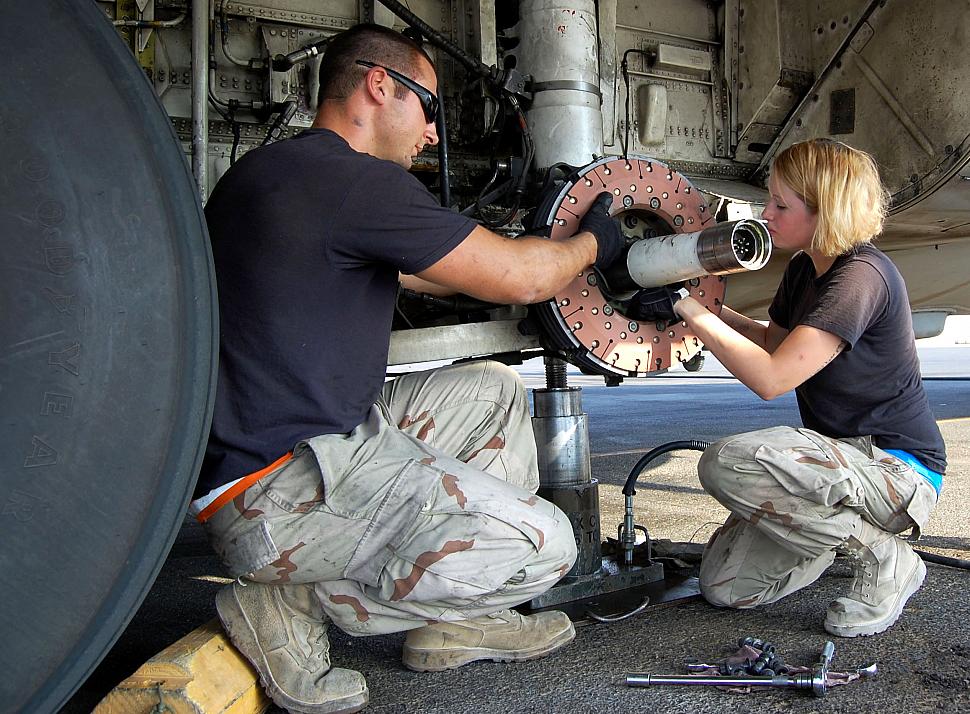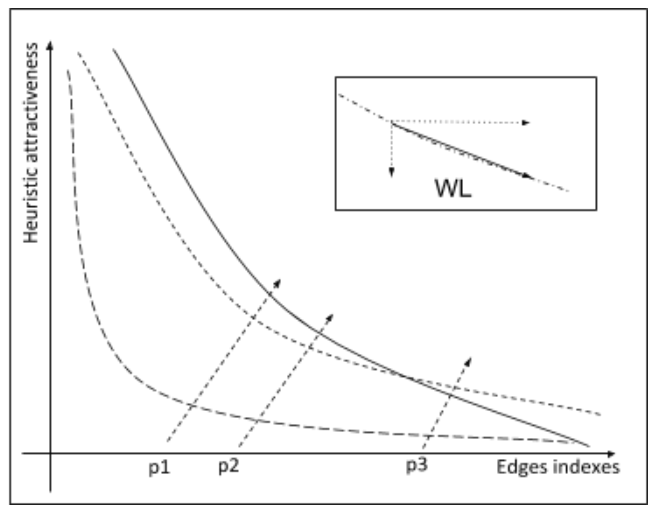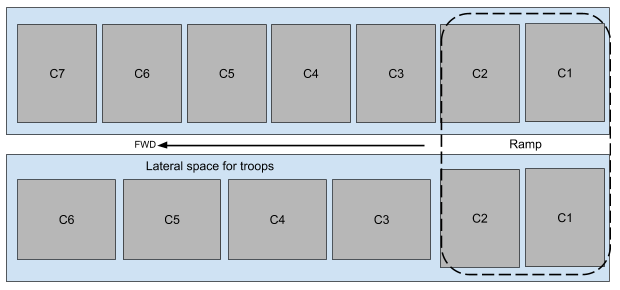IPS plan
ATL100 development
Elias Hallack Neto, Evandro Fernandes Fileno, Israel Silva, Paulo Francisco dos Santos e Rodolfo Vasconcelos.
The ATL-100 will be an aircraft, due to its physical and operational characteristics, capable of operating on totally unprepared runways, of land or grass, surrounded by obstacles, up to 400 meters in length, carrying up to 4,000 kg of cargo.
Already considered an aircraft specially designed to operate in the Amazon, North and Midwest brazilian regions, the ATL-100 will reach locations inaccessible to other aircraft, and even to ground vehicles.
The aircraft will be able to be operated by a single pilot, with capabilities to carry out tactical transport missions in several scenarios: coastal, polar, desertic, and beyond, of course, of amazonic.

Considering the FAB Request for Information document the final developed system will not deliver an electric or hybrid engine as a solution for the motorization of the aircraft.
Although there is currently a lot of talk about the use of electrical engine as a sustainable solution for the environment, which without any doubt it is a clean energy form, free of emissions, this technology still ís research object and development around the world, i.e. is not yet certified technology. There are still some limitations for use of this kind of motorization in certains aeronautical projects, mainly regarding the use of batteries (energy sources for the engines).
The reliable solution available, which will configure aircraft developments, still for some time, will be the combustion engine.

Desaer will provide proper product support for all aircraft delivered by it throughout the life cycle of the system in order to ensure the aircraft or parts continued airworthiness, including overhaul, inspection, replacement, rectification of defects and the incorporation of modifications by service bulletins, compliance with airworthiness and repair guidelines, during all life cycle of all aircraft delivered, and in accordance with the conditions to be established in the Technical Assistance Plan contract, which DESAER should provide:
1 - Interim support to be provided during the first 24 months of aircraft operation from enter into-ervice, by technical personnel specialized, in order to allow greater familiarization of COMAER personnel with the operation and maintenance of the aircraft.
2 - Field Technical Assistance, which will assist FAB in the operation and aircraft maintenance, providing advice on compliance with maintenance requirements and providing a technical link with DESAER.
3 - Operational and technical Support to the in service difficulties.
- DESAER Support will include the following activities:
a) Responses to queries from the operator;
b) Troubleshootings;
c) Structural repair schemes;
d) Meeting of operators;
e) Technical and operational assistance visits;
f) Operational support;
g) Investigation of accidents and incidents (participation);
h) Service bulletins and reports for operators;
i) On-call assistance;
j) Analysis of product modifications;
k) Emergency assistance for spare parts (AOG);
l) Support to reliability activity reports;
m) Administration of guarantees and
n) Engineering remote support or face-to-face.

Unless otherwise decided, the maintenance design of the ATL-300 aircraft will be adaptable to the concept used in COMAER, which comprises three levels of maintenance: 1st Level or Organizational, 2nd Level or Base and 3rd Level or Park.
The 1º level of Maintenance (Organizational Level) is related to the scheduled and unscheduled maintenance activities performed by the Air Unit, with its own personnel and equipment, and should be limited to on-aircraft maintenance and related to periodic checks, visual inspections, external adjustments and replacement of LRU`s.
The 2nd Level of Maintenance (Base Level) is related to the scheduled and unscheduled maintenance activities and major inspections performed on the system (on-aircraft), as well as those off-aircraft activities related to testing, calibrating and replacing SRU`s of the components applied to the aircraft .
The 3st Level of Aircraft Maintenance (Park Level), is limited to corrective maintenance activities of large structural repairs on-aircraft, as well as maintenance of components off-aircraft, such as overhaul and repair of repairs, tests and EAS calibration.
DESAER will provide COMAER a Level of Repair Analysis (LORA) study in order to identify the most efficient maintenance concept for the aircraft and its main components, identifying the maintenance activities to be performed at the respective maintenance levels adopted.
The maintenance planning will study, among other things, the maximum autonomy of COMAER organizations to carry out the maintenance of 1st and 2nd levels of maintenance.
The activities of 3rd level of maintenance will, as far as possible, be carried out in Brazil. In cases where there is not any brazilian company duly certified in order to provide the required support others options (foreign companies) for logistical support will be considered, since these companies to be capable to provided right support.
The preventive and or predictive maintenance of aircraft systems, components and structure will follow an DESAER Maintenance Plan, which will reflect the suppliers maintenance recommendations and the result of the MSG-3 analyzes, as well.
The development of the Maintenance Plan will be based on the MSG-3 methodology from Air Transport Association, and will consider an annual air effort of 1,000 flight-hours per aircraft per year. The plan will contain a minimum scheduled maintenance requirements in order to ensure continued airworthiness, as required by RBAC-25.
The aircraft maintenance plan will assure the levels of safety and reliability of the aircraft with the best cost-benefit ratio and will can to evolve from the initial program, according to the data obtained during the operation phase.
To support the flight test phase, a prototype maintenance plan will be drawn up.
COMAER will participate in the development of the maintenance plan, aiming at an optimized definition of the Scheduled maintenance requirements, considering its conditions, practices and operational experience. Training of MSG-3 methodology will be provided to COMAER representatives, who will participate in all process.
The Industry Steering Committee, ISC, will have a representative from COMAER, participating in the approval of the maintenance plan proposal (MRB Proposal), to be submitted to the authorities for approval.
The ISC will be also the responsible for approving the Policy and Procedures Handbook document that will define the rules and guides the entire process. The ISC also will approve the analyzes of the various Working Groups, WG.
The WGs will be divided by technology and them will participate with the representatives from COMAER. These representatives should have good experience in maintenance and in the respective technologies, as well, in order to contribute to the result of the analyzes and the maintenance program.
a) Mechanical Systems - Mechanical Systems Working Group (MWG).
b) Propulsion - Powerplant Working Group (PWG).
c) Structures - Structures Working Group (SWG).
d) Electrical/Electronic Systems - Electrical/Avionics Working Group (EWG).
e) Zonal Analysis - Zonal Working Group (ZWG), and
f) Lightning Protection and Electromagnetic Interference - Lightning and HIRF Working Group (LHWG).
What are Workings Groups?
- Mechanical Systems - Mechanical Systems Working Group (MWG): It will be the Group responsible for the analysis and definition of the mechanical systems maintenance requirements, including landing gear, hydraulic systems, flight controls, interiors, environmental control, water and debris, oxygen, pneumatic, de-ice, loading and doors.
- Propulsion - Powerplant Working Group (PWG): This Group will be The responsible for the analysis and definition of the maintenance requirements of the propulsion systems, including engine, fuel, auxiliary power unit - APU, and fire protection.
- Electrical/Electronic System - Electrical/Avionics Working Group (EWG): This Group will be the responsible for the analysis and definition of maintenance requirements for Electrical/Electronic systems, including, Generation and electrical distribution, batteries, lighting, communication, navigation, mission systems, indication and data and voice recording.
- Structures - Structures Working Group (SWG): It will be the Group responsible for the analysis and definition of maintenance requirements for structural items, including the determination of General Visual inspections (GVI), Detailed Visual inspections (DET), and Special Detailed inspections (SDI), as well as the definition of the corrosion prevention and control program (CPCP).
- Zonal/EWIS - Zonal Working Group (ZWG): It will be the Group responsible for the analysis and definition of Zonal maintenance requirements, including General Visual (GVI), Detailed Visual (DET) inspections that must be performed in each area of the aircraft for damage detection to items such as piping, wiring, connectors, installations and other items not covered by the analysis of systems and structures.
- Lightning Protection and Electromagnetic Interference Lightning and HIRF Working Group (LHWG): It will be the Group responsible for the analysis and definition of maintenance requirements for detecting degradation and damage to lightning protection and electromagnetic interference.
Attention: All participants will receive training in the MSG3 methodology (to be defined), in order to obtain the necessary knowledge to understand the analyzes according to this methodology.

Broadly describe here the system development activity, the development effort, something about hardware, software, materials, personnel, facilities, and processes.

Describe here how it is expected to keep the system in the expected level of availibility.

Describe how the level-of-repair analysis will be accomplished. The failure reporting and corrective action system should be described in this section and should include the three basic phases of the failure reporting and corrective action system process:
1. Collection of prediction data
2. Combining test data with prediction data
3. Use of field data
Determine the cost drivers in acquisition, operation, and support Identification of risk areas relative to life-cycle costs, as early as possible, on behalf of reaching an optimum logistics support program.
Supportability analisys

Describe here how the vendors will be raised, and under which criteria they will be selected, according to the acquisition program. Supportability attributes are important basis for selection. Supportability criteria includes product cost; reliability and maintainability (R&M), or testability and diagnosability; repairability, vendor maturity/stability; repair and service life support capabilities.

Describe here how each life cycle phase will be controlled. The technical staff, and working groups involved.

Describe here the processes to ensure accurate IPS data, how the IPS manager will conduct meetings with related engineering personnel, and sponsors, as well as the responsible for the agendas.

Objectives tailored to the project, which are aligned with the program directives, should be included in this section.
Include all engineering and support disciplines applied to the design/development process, as well as consise and complete descriptions.
spares, repair parts, consumables, special supplies, and related inventories needed to support prime mission-oriented equipment.
Development of maintenance procedures;
Use of R&M predictions, and failure mode, effects, and criticality analysis (FMEA);
Definition of corrective maintenance and the required manpower, tools, and test equipment to support maintenance;
Logistics engineering, maintainability, and spares provisioning functions;
Coordination of all related inputs, outputs, and dependencies among the ILS elements;
Obtaining cost data from procurement for the logistics analysis for cost studies and maintenance planning activities.
Personnel required for installation, checkout, operation, handling, and sustaining maintenance of the system and project associated test and support equipment should be identified, trained, and available prior to any field testing.
Describe the use of the workload analysis results, data collection techniques that include interviews with user experts.
Describe how the personnel requirements analysis will be performed in conjunction with the logistics analysis, and focus on identifying the skills needed to operate, maintain, and support the system.
Elias Hallack Neto, Evandro Fernandes Fileno, Israel Silva, Paulo Francisco dos Santos e Rodolfo Vasconcelos.
Provide a list of nonoperational computer resources required for logistics planning and implementation.
Include packaging and handling of spare and repair parts sufficient to accommodate shelf life requirements, and vendor repair and restock.
Packaging, Transportation, and Storage requirements.

All facility design and activation activities that will occur during the development and production phases.
Detailed facility requirements Flow chart/schedule outlining for ensuring the facility meets specifications.
Installation planning data should be provided to the logistics engineers for the assessment of life-cycle cost impacts related to support facilities.
Power requirements, cabling diagrams, physical layouts, and accessibility for maintenance will be essential inputs to the project database and maintainability task analyses.
Define and plan the activities for Logistics Support Analysis (LSA) and monitors the performance of LSA activities along the project life to ensure LSA data is delivered to fulfil supportability requirements.
Identify opportunities for influencing the design, develop the most cost-effective support concept, and define logistics support resource requirements to minimize life cycle cost.
Overall support requirements;
Assigning full responsibility for ensuring the system infrastructure is maintained and available for use;
Operational availability requirements;
How to maintain and manage the baseline hardware and software configuration;
How to perform hardware and software modifications;How to provide enhancements to the technical documentation;
Issue and receipt of equipment.
Potential problems due to inadequate supply;
Analyse and process end-of-life issues;
Alternatives to satisfy potential support issues that may surface at the operational site; Maintenance, including configuration management;
Supply support;Facilities and infrastructure;Training and training support;
Safety, including control of substances hazardous to health considerations;
Technical publications; PHS&T; Software resources.


